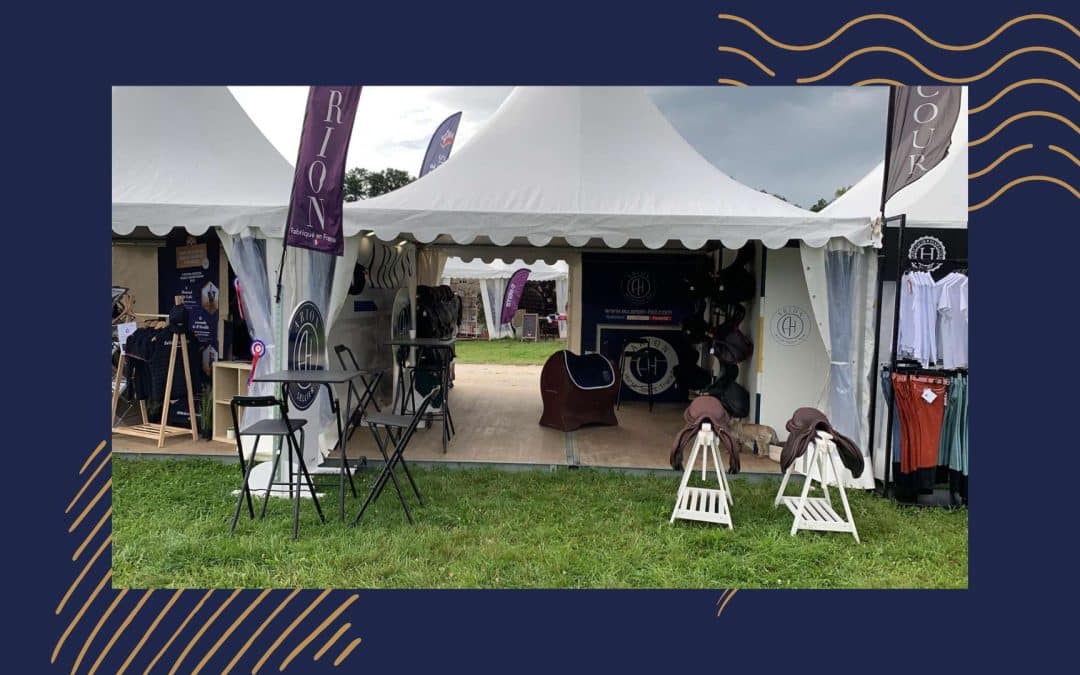The heatwave is raging in France. It affects us directly, but it also affects our horses! Here are a few tips for looking after your horse in hot weather.

The saddle is a very important element in horseback riding. Adjusting the saddle is one of the least common, yet most effective techniques in the search for comfort.
Today, check out our five saddle-fitting tips to get the best fit for your saddle.
The more we practice horseback riding, the more we understand we understand the differences between between saddles and their importance.
In order to adapt the saddle to your horse, look first at the discipline to which it will correspond. Jumpers or dressage riders, to progress discipline and keep a certain comfort for you and your horse, you must choose the right choose the right saddle. If your practice is rather versatile, a mixed saddle will be more than enough.
In all cases, ask yourself before choosing your saddle. Ask yourself which discipline you practice the most and what characteristics you expect from a saddle. The characteristics of a good dressage saddle are quite different from those of a are quite different from those of a cross country saddle.

The European CCE Championships are being held at the Haras du Pin in 2023, and the whole...
The second point to consider when buying a saddle is the particularity of the back of your horse.
In general, a classic mixed saddle, with standard dimensions will be suitable for a large part of the horses. However, as each horse has a different morphology, a standard saddle will not be perfectly perfectly adapted.
At Arion HST, our ambition is to offer each horse a saddle that is perfectly adapted to his anatomy. Choose between a saddle custom-made or half-measure to free your horse from from all the constraints that he could encounter with a non-adjusted equipment.
In this quest for comfort, we offer saddles with different sizes of trees to fit the horse's body as closely as possible.
The next time you saddle your horse, take a good look at his back. Here a few features that are that it is essential to consider when adjusting the saddle:
We believe that it is the equipment that should adapt to our horses, and not the not the other way around.
On a saddle, the gutter is the "hollow"between the padding. The latter are in contact with the horse's back and serve as a shock absorber, whereas the gutter must not in any case touch the skin.
There is a simple reason for this.
The spine is composed of vertebrae and ligaments. Just below the top of the spinous processes, from the withers to the sacrum, is located the supraspinous ligament. This is a very sensitive ligament, which guarantees the proper functioning of the spine. This ligament stretches and relaxes as the horse lowers or raises its head.
If the back area is constrained, the movement is not carried out properly, conflicts of the spinous processes can occur. In addition to altering the locomotion of the horse, these conflicts are detrimental to the health of the horse.
For more information on the subject, we recommend reading an article from IFCE on the functioning of the horse's back and its consideration in training.
In concrete terms, the gutter depth is guarantees the free functioning of the of the horse's spine during work.
So, to get the best fit for your saddle, before you buy your new saddle, or for your current saddle, check that the gutter does not touch the carpet when you saddle up. If this is the case, this saddle is not not fully adapted to your horse your horse and could injure him.
What is true for our horses is also true for us.
As riders, we all have different different morphologies. Thus, a saddle with standard dimensions will not necessarily suit us.
It happens that we have wider or narrower pelvises, bigger or smaller hips, shorter or longer legs... An unsuitable saddle will very quickly be a brake on our progress.
Many riders reassure themselves that they do not ride enough to be enough to complain about to complain about an inadequate saddle. However, if you don't adjust your saddle, you risk develop bad habits. A saddle that is too big for us will make us ride too far back; quarters that are too short for our legs don't help keep them in place; a seat that is excessively hollow will "hold us up".will hold"too much.
Adjusting the saddle to the rider-horse pair is a guarantee of comfort and performance.
The last point which seems to us essential for a good saddle-fitting is the choice of materials.
Indeed, depending on the quality of the materials used in the choice of your saddle, it will be more or less comfortable.
To understand the importance of materials, let's look at the saddle in more detail.
Inside the classic saddles, there is a tree. This can be made of different materials, with their positive and negative points.
The wooden pommel
The synthetic pommel
In addition to the tree, the general material of the saddle is important. At Arion HST, we prefer to use leatherbecause it is a noble, durable and resistant material. Our top-of-the-line leathers are rigorously selected for their quality. The key to the longevity of natural saddles is a regular maintenance of the leather.
However, there are less expensive less expensivemade of synthetic material. However, the durability is not there. Neither is the comfort, knowing that plastic heats up in summer and slips when wet.
If you have any doubts about the proper fit of your saddle, our French saddlery experts will assist you from A to Z.

Adjusting the saddle to the rider and the horse is essential for the comfort of the couple. Improved comfort for optimized performance.
The saddle should be perfectly in place on your horse's back, on the carrying area. On your side, your saddle should not suffer from abnormal wear.
The best way is to ask an expert. Thanks to specific tools and a thorough study, he will be able to confirm or not that your saddle is suitable.